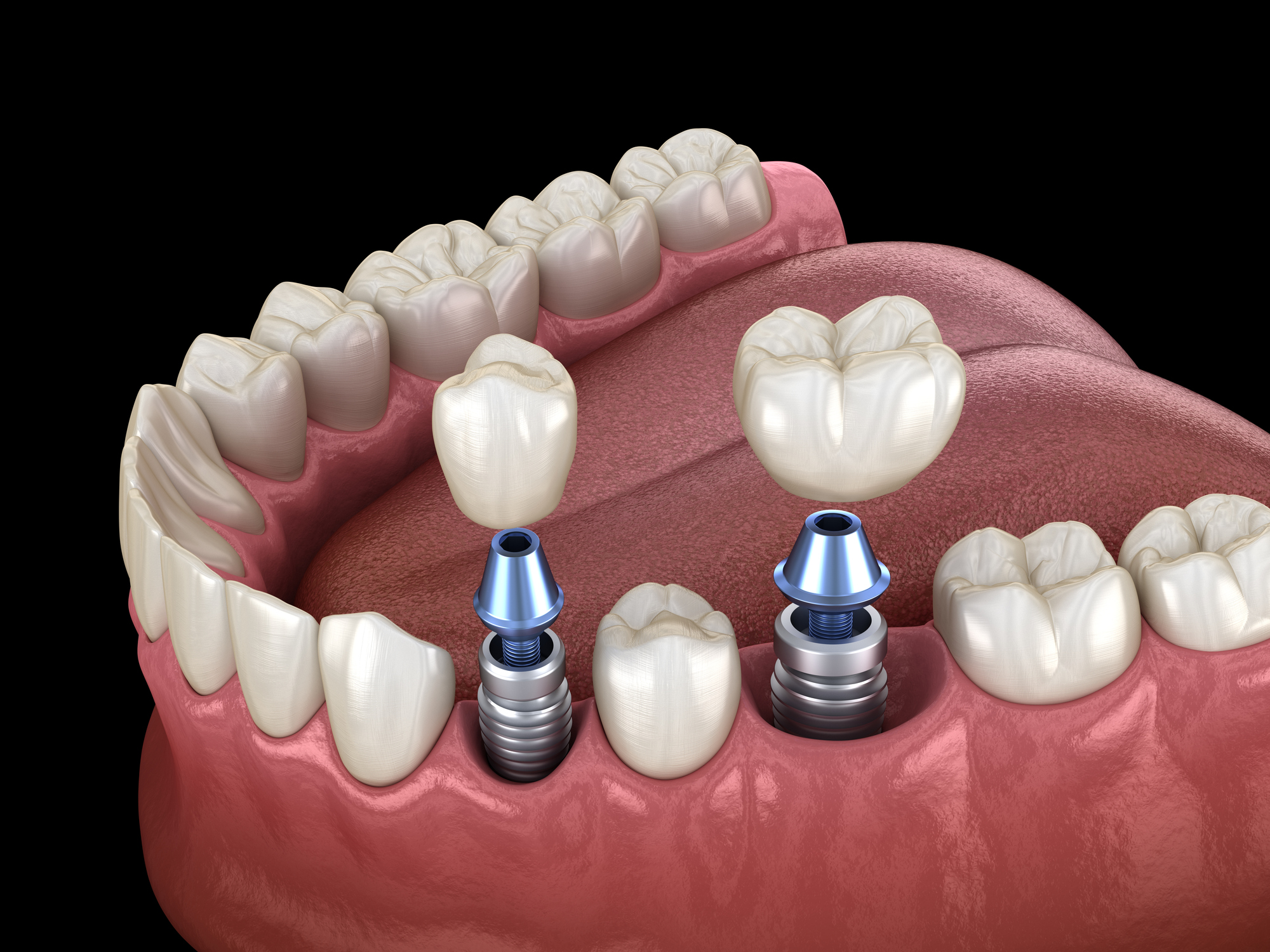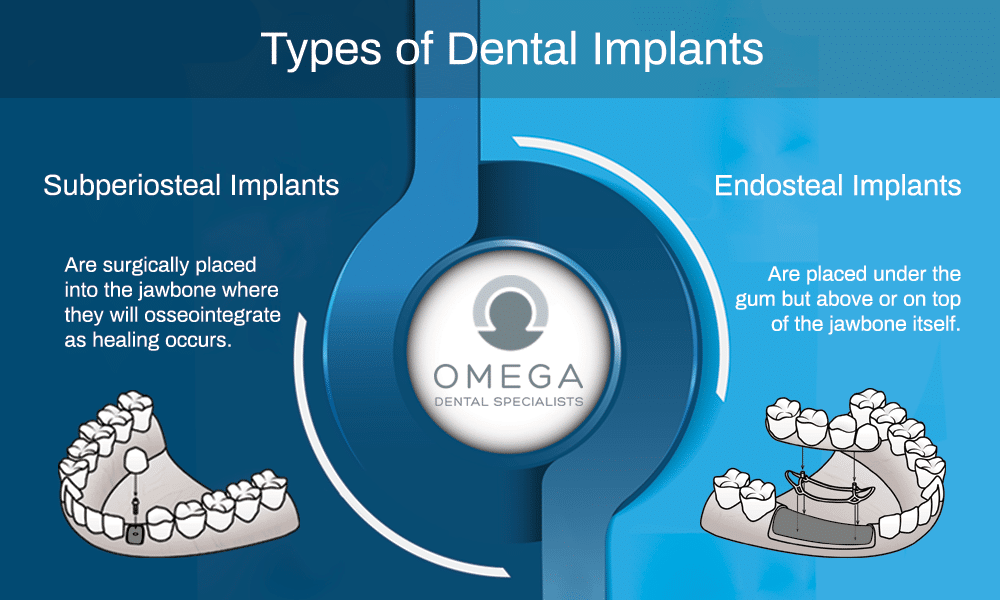The Only Guide for Dental Sense
The Only Guide for Dental Sense
Blog Article
The 15-Second Trick For Dental Sense
Table of ContentsExcitement About Dental Sense3 Simple Techniques For Dental SenseDental Sense - An OverviewThe 7-Second Trick For Dental Sense
are clinical gadgets surgically dental implanted into the jaw to recover an individual's capability to eat or their look. They provide support for fabricated (phony) teeth, such as crowns, bridges, or dentures. When a tooth is shed due to injury or illness, an individual can experience difficulties such as quick bone loss, faulty speech, or adjustments to eating patterns that lead to pain.Dental dental implant systems consist of a dental implant body and oral implant abutment and may likewise consist of an abutment addiction screw. Dental implant vs bridge. The oral implant body is surgically inserted in the jawbone instead of the tooth's root. The dental implant joint is generally connected to the dental implant body by the abutment addiction screw and expands via gum tissues right into the mouth to sustain the connected artificial teeth
(http://www.askmap.net/location/7224225/united-states/dental-sense)Structure of The Oral Implant System picking oral implants, speak with your oral service provider concerning the possible advantages and threats, and whether you are a candidate for the treatment. Points to think about: Your overall wellness is an important aspect in identifying whether you are a great candidate for oral implants, for how long it will take to recover, and how much time the implant might remain in location.
Cigarette smoking may affect the healing procedure and reduce the long-term success of the implant. The recovery process for the dental implant body might take several months or longer, throughout which time you commonly have a short-term joint instead of the tooth. the dental implant treatment: Very carefully comply with the oral health guidelines offered to you by your oral company.
The Only Guide for Dental Sense
Implant failure can result in the requirement for another procedure to repair or replace the dental implant system. Brings back the capacity to eat Brings back aesthetic appearance Assists maintain the jawbone from reducing due to bone loss Preserves the health of the bordering bone and gums Assists maintain nearby (nearby) teeth stable Improves lifestyle Damage to surrounding natural teeth throughout implant placement Injury to the surrounding tissues during surgical procedure, such as sinus perforation Injury throughout surgical procedure (for example, crack of surrounding jawbone) Poor function, such as seeming like the teeth do not bite together generally A sensation that the tooth is loosened or twisting in place resulting from a joint screw loosening up Implant body failure (looseness of the dental implant body) because of systemic infection, which might be most likely in clients with uncontrolled diabetes because of local infection in bone and periodontals sustaining the implant body due to delayed recovery, which may be more probable in people who smoke Trouble cleaning up the gums around the dental implant, leading to poor dental hygiene Unattended periodontal condition Post-surgical feeling numb as a result of nerve impingement or damage Always alert healthcare companies and imaging service technicians that you have oral implants before any magnetic resonance imaging (MRI) or x-ray procedures.
FDA is not aware of any type of negative occasions reported for MRI or x-ray treatments with oral implants. Oral implants systems are normally made from materials that comply with worldwide agreement requirements of the International Organization for Standardization (ISO) or ASTM International. These criteria have details of what makes a secure material.

A dental implant is a framework that replaces a missing tooth. With screw-like devices, the doctor inserts a dental implant right into the jawbone, and it acts as a support for a man-made tooth, called a crown.
Dental Sense Things To Know Before You Get This
Some people are not eligible for dental implant surgical procedure. It is for oral surgeons to operate individuals with: severe illnessuncontrollable metabolic diseasebone or soft tissue disease or infectionIf these issues are resolved, a person can have the surgical treatment. In, dental cosmetic surgeons avoid from operating people with: If people with any of the above go through oral implant surgical treatment, there is a greater threat of the implant failing.

Dental dental implant surgical treatment is a tailored procedure. It's not the exact same for every person. Yet the adhering to offers a general summary of what you can anticipate your dental practitioner, dental doctor, periodontist or prosthodontist to do: Put the implant operatively. Offer you time to recover. Affix the message and final crown, bridge or denture.
Next, your surgeon will carefully put the oral implant into your jaw. If your implant is near the front of your mouth, your dental practitioner will over at this website make a momentary tooth for you to wear till you recover.
Dental Sense - The Facts
Your company can inform you what to anticipate in your situation. Throughout the healing phase, your jawbone must fuse to the dental implant. This procedure, called osseointegration, is vital for stability and lasting success. This process can take anywhere from three to nine months. Sometimes, it may take longer.
When your implant heals, your dental practitioner can attach the joint (tiny adapter blog post) and your final reconstruction (crown, bridge or denture). This typically takes about one hour to complete and might call for a second small surgical treatment. You should not really feel any type of pain during your oral implant procedure since your service provider will certainly make use of medication to numb your periodontals.
Report this page